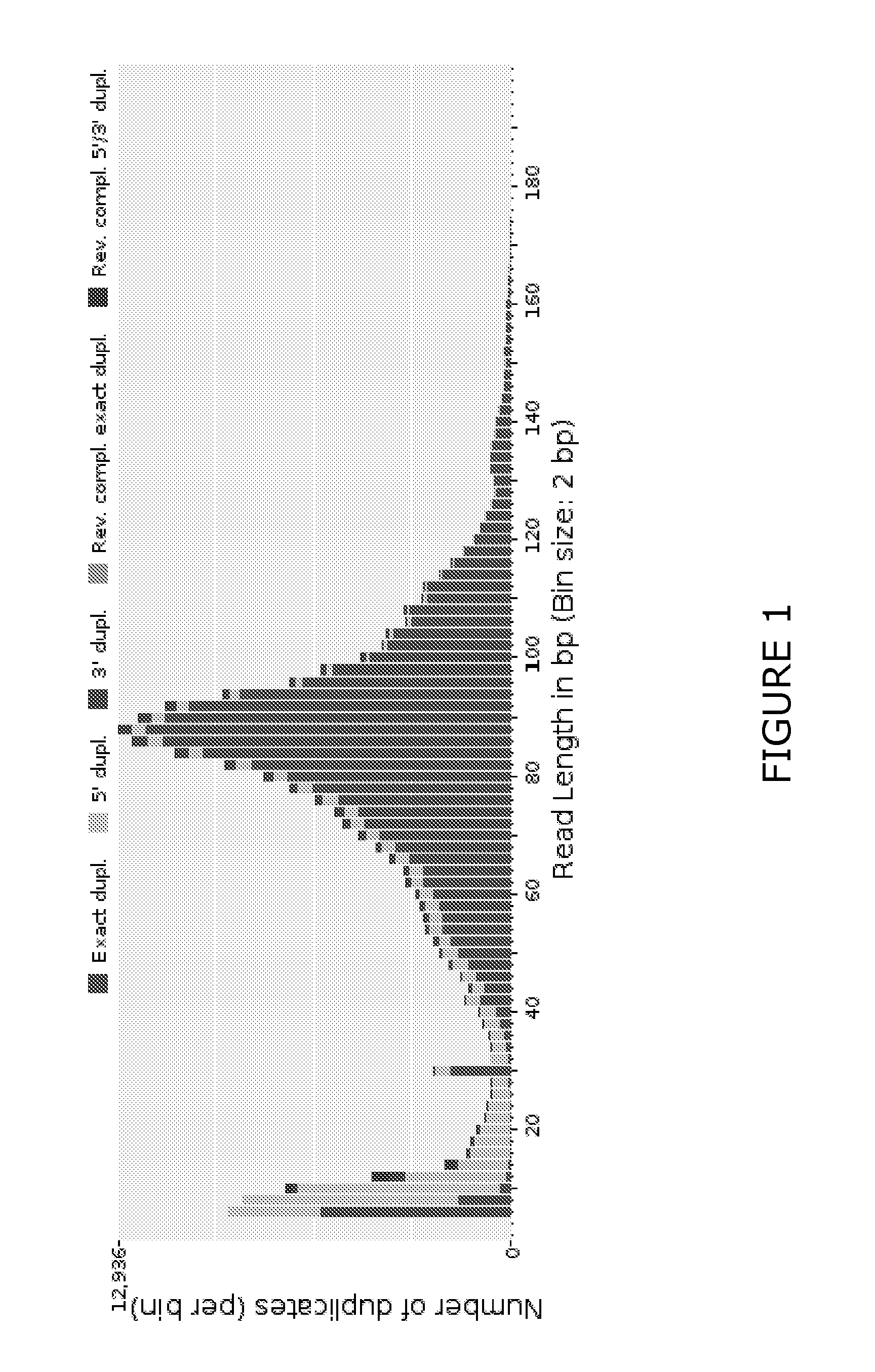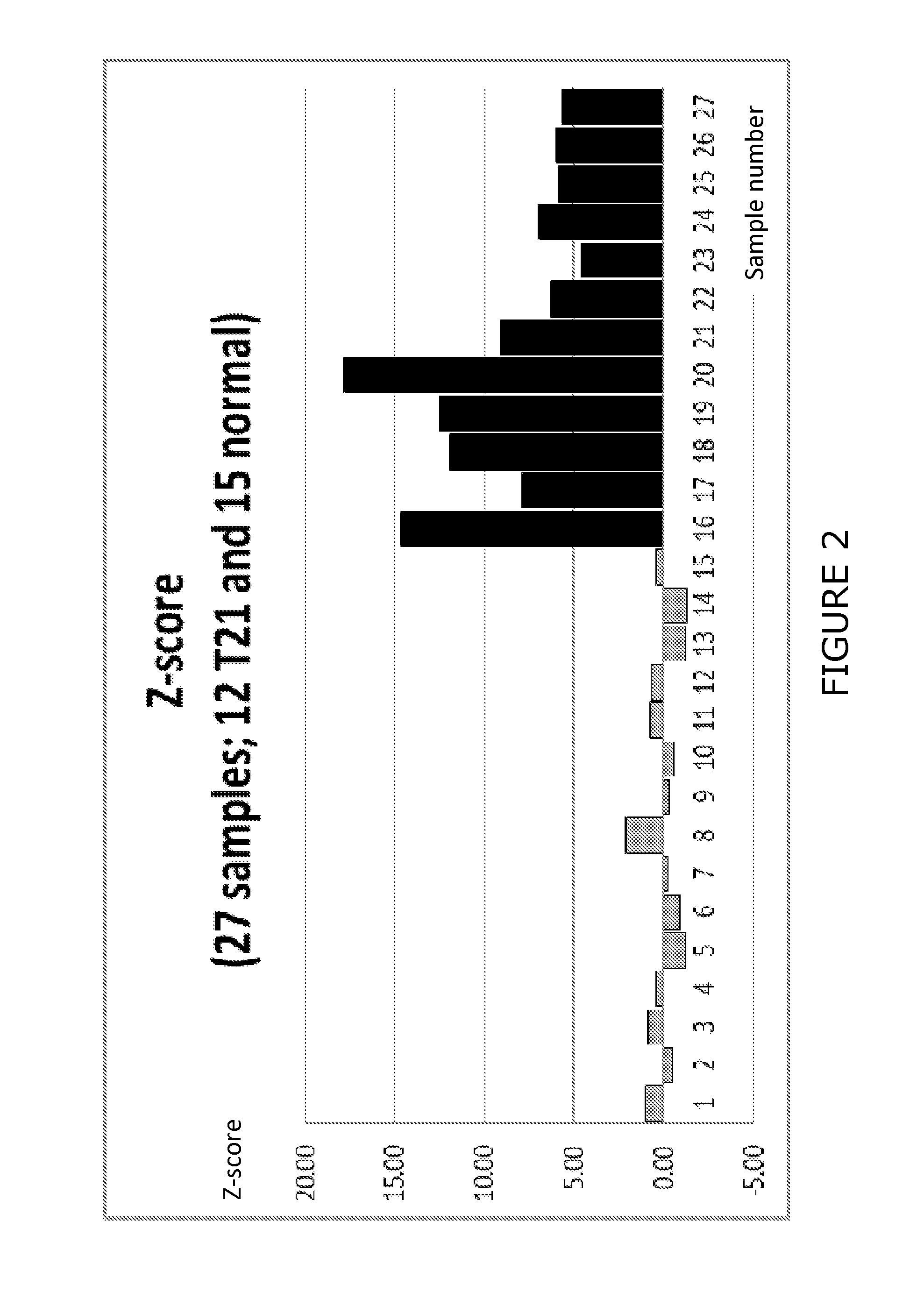Method of detecting chromosomal abnormalities
- Summary
- Abstract
- Description
- Claims
- Application Information
AI Technical Summary
Benefits of technology
Problems solved by technology
Method used
Image
Examples
example 1
Detection of Trisomy 21 in Blood Plasma Samples
[0115]In order to evaluate the effectiveness of the methods of the invention in diagnosing Trisomy 21, blood plasma samples were separately obtained from normal pregnancies and Trisomy 21 pregnancies in accordance with routine procedures (for example a 5-20 ml blood sample was withdrawn from the subject and the plasma was separated followed by extraction of plasma DNA).
[0116]The plasma DNA was then subjected to sequence analysis using the Ion Torrent PGM device. For example, adaptors were attached, a library was prepared and emulsion PCR was performed prior to sequence analysis.
[0117]The sequence data was then obtained for approx. 25 bp-250 bp for a large number of individual molecules, typically 1-10 million reads.
[0118]The data was subjected to bioinformatic analysis as described hereinbefore. For example, duplicate reads were collapsed using the FASTX-Toolkit. The data was then subjected to a matching analysis using Bowtie2 software ...
PUM
| Property | Measurement | Unit |
|---|---|---|
| Length | aaaaa | aaaaa |
| Threshold limit | aaaaa | aaaaa |
Abstract
Description
Claims
Application Information
 Login to View More
Login to View More - R&D
- Intellectual Property
- Life Sciences
- Materials
- Tech Scout
- Unparalleled Data Quality
- Higher Quality Content
- 60% Fewer Hallucinations
Browse by: Latest US Patents, China's latest patents, Technical Efficacy Thesaurus, Application Domain, Technology Topic, Popular Technical Reports.
© 2025 PatSnap. All rights reserved.Legal|Privacy policy|Modern Slavery Act Transparency Statement|Sitemap|About US| Contact US: help@patsnap.com


